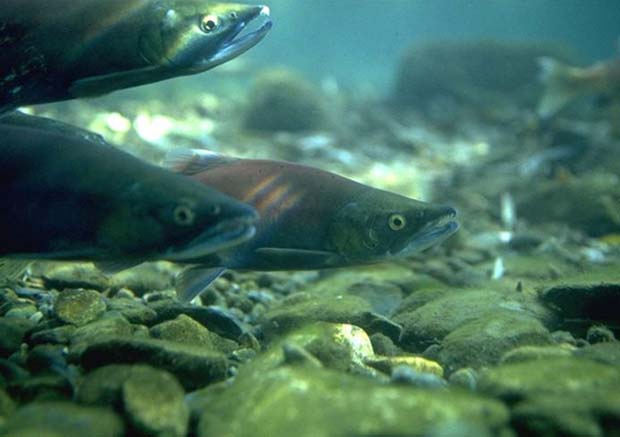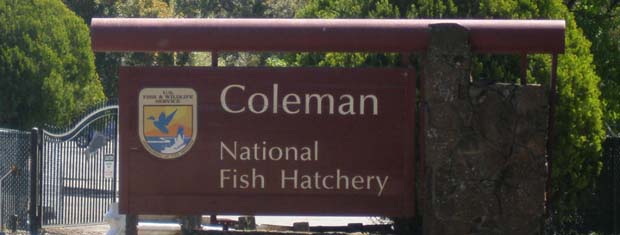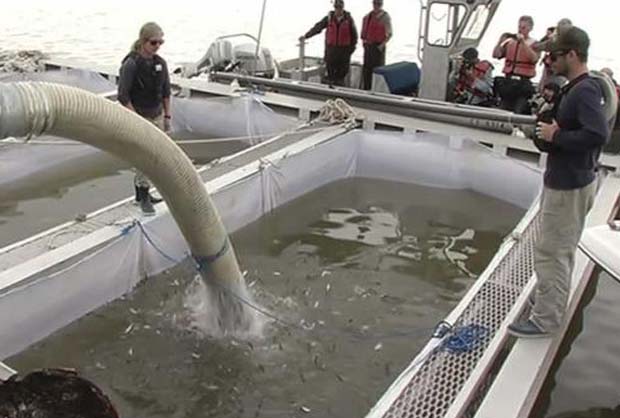Young salmon will provide opportunity, wages, to fishermen in 2016
San Francisco, California
[dropcap]T[/dropcap]he Golden Gate Salmon Association greeted the arrival of tanker trucks bringing millions of juvenile salmon to the Delta. The fish are being trucked from the Coleman National Fish Hatchery located hundreds of miles up the Sacramento River because drought conditions have made the river virtually impassable to baby salmon. The trucks are carrying them around the deadly drought zone to safe release sites in the Delta and bay. After a short acclimation period, the fish are being released to migrate to the ocean. In 2016 they’ll be adults contributing to the ocean and inland fisheries.
“Our 2016 fishing season may be riding on the survival of the fish in these trucks,” said GGSA chairman Roger Thomas. “We know that fish trucked around dangers lurking in the rivers and Delta survive at much higher rates than those released at the hatcheries.”
Ordinarily the Coleman hatchery releases its fish at the hatchery into Battle Creek, a tributary of the upper Sacramento River near Redding. They are being trucked this year because they’d likely die in the low, clear, hot river conditions created by drought.
Coleman hatchery is operated by the U.S. Fish & Wildlife Service (USFWS) and raises approximately 12 million baby fall run salmon annually to help mitigate for the destruction of habitat by Shasta Dam and federal water operations in the Upper Sacramento River.
“GGSA worked with the US Fish and Wildlife Service to move and save these salmon,” said GGSA executive director John McManus. “What this means is we’ll likely have a much better salmon fishing season in 2016, when these fish reach adulthood, then we would have otherwise gotten. This could mean the difference between a shutdown of the fishery in 2016 and a decent year.”
California’s state-operated hatcheries truck much of their production annually for release in the Delta or Bay and this year the state took a leading role to truck even more due to the drought. State and federally raised hatchery fish could make up much of 2016’s adult salmon harvest and spawning adults.
With no significant rain in sight, trucking the rest of the Coleman baby salmon is expected to continue through June.
“Although transporting the baby salmon in tanker trucks and releasing them into the bay or western Delta will greatly increase their chances of survival, it’s not our preferred option” said GGSA treasurer Victor Gonella. “We’d all rather see a functioning, healthy river and Delta that support natural and hatchery salmon.”
Baby salmon this year face the added risk of being pulled to their deaths through the Delta Cross channel, a manmade canal built to divert water to huge pumps that send it to agriculture. Normally the Cross Channel Gates would be closed at this time of year to allow salmon passage. However, they are now being opened to dilute salt water accumulation in the interior Delta caused by the drought. In addition pumping of Delta water south in recent weeks was increased even as wildlife managers warned water agencies that many wild federally protected winter and spring run baby salmon were threatened by the pumping. Low numbers of winter run could adversely affect the 2016 fishing season.
“The Fish and Wildlife Service developed criteria for this year dictating when it should transport salmon rather than release them into hostile drought conditions. We think hatchery fish should be trucked in the future whenever these criteria are triggered by low water conditions,” said GGSA secretary Dick Pool.
“As more and more fresh water is extracted from the Sacramento River and Delta for delivery to San Joaquin Valley agribusiness, the salmon’s migration corridor downstream and through the Bay-Delta estuary has become a deadly gauntlet,” said GGSA vice chairman Zeke Grader who is also the executive director of the Pacific Coast Federation of Fishermen’s Associations. “Add drought, and the Central Valley rivers and Delta become virtually impassable for salmon.”
GGSA was joined by member fishing groups in working to get the Coleman fish trucked. Members of Congress including Representatives Jared Huffman, Mike Thompson, John Garamendi, Anna Eshoo, Jackie Speier, George Miller and Mike Honda also supported the efforts.
Currently, California’s salmon industry is valued at $1.4 billion in economic activity annually and about half that much in economic activity again in Oregon. The industry employs tens of thousands of people from Santa Barbara to northern Oregon. This is a huge economic bloc made up of commercial fishing men and women, recreational anglers (fresh and salt water), fish processors, marinas, coastal communities, fishing guides, equipment manufacturers, the hotel and food industry, tribes, and the salmon fishing industry at large.
About GGSA
The Golden Gate Salmon Association is a coalition of salmon advocates that includes commercial and recreational salmon fishermen, a Native American tribe, businesses, restaurants, fishing guides, environmentalists, families and communities that rely on salmon. GGSA’s mission is to protect and restore California’s largest salmon producing habitat comprised of the Central Valley rivers that feed the Bay-Delta ecosystem and the communities that rely on salmon.




